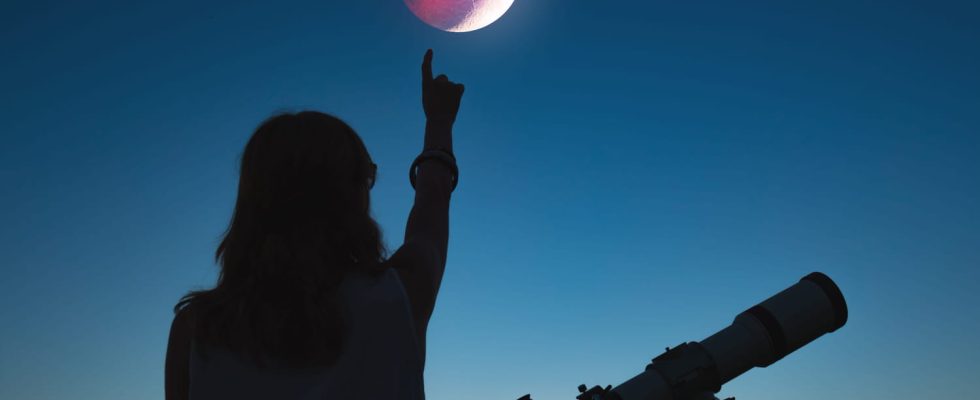MOON ECLIPSE. In France, a lunar eclipse that is difficult to observe will occur this Monday, March 25, 2024. An update on the key dates of the year and this astronomical phenomenon.
[Mis à jour le 24 mars 2024 à 18h30] The first eclipse of moon of the year 2024 will take place this Monday March 25. Quite discreet at the time when it will occur in mainland France, it will be difficult to observe. Indeed, “the twilight zone will be slightly lit by the Sun, on the coast. The Moon will still be in the eclipse zone. It will remain a little bit lit (in this twilight zone) but indirectly,” explains Florent Deleflie, astronomer at the Paris Observatory (PLS) and IMCCE, for Actu.fr.
This next penumbral eclipse on March 25 will, however, be visible in its entirety over the American continent, a western part of the Atlantic Ocean and an eastern part of the Pacific Ocean. Residents of Eastern America will be able to enjoy the spectacle at moonrise, while those in Oceania at moonset…
According to’IMCCE. There will only have been two this year, visible from France… The second lunar eclipse of 2024 will also be partial. It will take place on September 18, 2024. In our file, we explain how an eclipse is formed, how to see it and even photograph it.
A lunar eclipse will take place on Monday March 25. Its entry into darkness is scheduled for 5:53 a.m. French time (4:53 a.m. UTC). The maximum of the eclipse will be forecast for 8:12 a.m. French time. Finally, its emergence from darkness will take place at 10:32 a.m. French time.
The next lunar eclipse completely visible in France metropolitan will not take place before December 20, 2029…Scientists predict an incredible show all night long!
It is important to emphasize that the astronomical phenomenon of the lunar eclipse is only possible when the Moon is full. A lunar eclipse can only take place when the Moon is at the
If the sky is clear, there is no problem observing a lunar eclipse with the naked eye, without any danger (unlike thesolar eclipse) and without any special equipment. We advise you to position yourself towards the clear horizon and turn towards the southwest. The observation location must be located far from any light pollution (at the top of a hill, on a beach, etc.) As for a super moonin case you find yourself in an area where clouds obscure your visibility, you can arm yourself with your telescopeof yours binoculars or a pair of astronomical glasses to observe the lunar eclipse even better.
For those who wish to immortalize the phenomenon, you can equip yourself with a standard 50 mm lens as well as longer focal length lenses (between 200 mm and 2,700 mm on a full frame sensor). The important thing is to have a tripod to avoid camera shake. The use of a telephoto lens is obviously ideal so that the moon fits entirely into the frame, but for photographers with a small focal length, you can create an eclipse sequence (successive superimpositions of the different phases of the eclipse on the same photograph). Given the low light during the lunar eclipse, set your camera with medium to high sensitivity depending on the phase of the eclipse, as well as a wide aperture.
